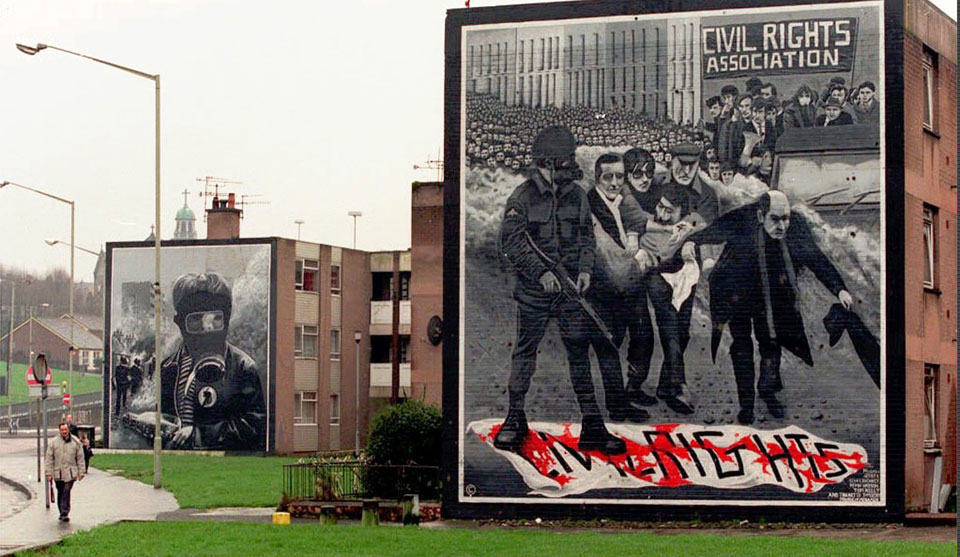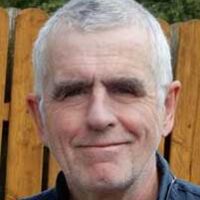
On Sunday, January 30, 1972, in Derry in the North of Ireland, the First Battalion of the British Parachute regiment (1Para) carried out a massacre of 14 peaceful demonstrators at an anti-internment march in the Catholic district of the Bogside. It entered the history books as Derry’s Bloody Sunday.
On that day the peaceful Northern Ireland Civil Rights Movement (NICRA) was also fatally wounded. Peaceful protest was over and a prolonged, bitter and fruitless bloody conflict replaced it.
In August 1969 the Catholic community welcomed British soldiers onto the streets of Northern Ireland sent by the British Labour Government. It halted pogroms being waged by armed police and militia of the Unionist regime. State violence was the only answer the Unionists had to the Civil Rights campaign demanding an end to anti-Catholic discrimination in jobs, housing, and electoral gerrymandering.
However, a general election in Britain returned a Conservative Government in June 1970, and British security policy changed utterly. The Tories had close fraternal ties with the Unionist regime, and so the Catholic community was once more the enemy. Within weeks a brutal military curfew was imposed on the Catholic district of Belfast’s Lower Falls. Two wings of the IRA had emerged and procured weapons.
In August 1971, the Unionist regime, working hand-in-glove with the British army, imposed internment without trial of Catholic suspects. It was in the midst of this inflamed situation that 1Para carried out the August 9-11 “Ballymurphy Massacre” in Belfast killing ten innocent people, including a 44-year-old mother, a priest, and eight men.
A number of the British soldiers received commendations for their actions in Ballymurphy. This included Soldier F, who played a deadly role in Derry. Also present at both mass killings was the future head of the British army, General Sir Mike Jackson. This massacre received no coverage at the time. Thanks to the endurance of the relatives of the dead, in May 2021 an inquest found the victims innocent.
In Derry, the barricades used in 1969 to thwart the pogroms remained in place. The area, known as “Free Derry,” became a “no-go-area” for soldiers and police. Armed IRA volunteers manned checkpoints. The authorities viewed this as an affront. The announcement of a NICRA anti-internment march in “Free Derry” in January 1972 was seen as the opportunity by the army to crush the opposition.
A model of the Bogside was made in Germany for the specific purpose of the 1Para’s operation on Bloody Sunday. This battalion was under the command of Brigadier Frank Edward Kitson in Belfast—an “expert in counterinsurgency.” He had studied and written about the tactics he used in Britain’s colonial wars. The secret “GEN 42” committee, chaired by Prime Minister Ted Heath that included ministers and senior military personnel, gave the go-ahead to use 1Para against Derry’s Catholic community—the old British tactic of “collective punishment.” Both Heath and General Ford, the army chief in North Ireland, privately recommended the use of live ammunition to quell riots in Derry.
Meanwhile, NICRA had a good working relationship with Derry’s police chief, who happened to be a Catholic. The march would stay within Free Derry. Armed IRA members would not be present.
The Guardian’s Simon Winchester wrote there was “an air of a Derry carnival.” That changed when 1Para entered the area at speed, shooting indiscriminately at anyone. Total mayhem ensued.
The authorities prepared their coverup well. Lord Widgery held an inquiry and branded all the dead as IRA gunmen or bombers.
It was only in 1998 as part of the peace process that a new public inquiry under Lord Saville was called. Twelve years later and £195 million spent, Saville exonerated the victims and, as planned, the British authorities. Individual soldiers were to blame. A 16-man platoon committed the majority of the murders, but only decorated Soldier F faced charges and they were dropped last autumn.
On Sunday there will be events to mark the massacre. One of these is aptly entitled: “There is no such thing as British justice!”










